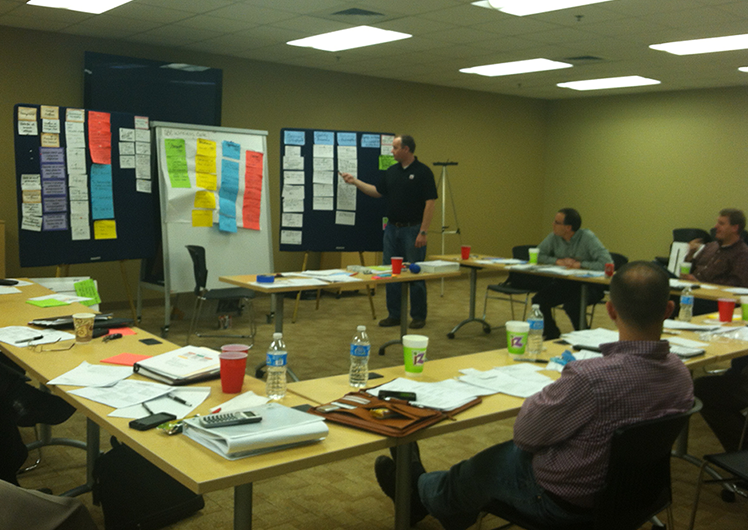Planting a Strategy
When I was a child we had a good-sized garden. My father liked to plant many crops in it, but loved his green beans. Not just any bean would do. “Kentucky Wonder” pole beans were his calling. He was known for his knack of growing them and his disposition for sharing baskets full with others.
His process for planting was logical and systematic.
- Plow and fertilize the soil based on climate or moon phase.
- Select high quality seeds and plant them at the correct depth.
- Place a 5-foot pole near the bean plant, so the vines (runners) can latch on and move up the structure.
- Train each of his children to work the garden; place any wild runners back on the pole and sprinkle Seven Dust™ to protect the plants from pests insects.
- Listen to what people say about the taste and look of the beans and note ways to improve next year.
The General’s Way
Strategic Planning is often called the art of the general. The premise of strategic planning is to set up as a sequence of moves based on your strengths and your competitor’s weaknesses so that you win and they lose. For decades this blood-on-the-field military model has been the tradition in business strategy development, but with limited success.
A McKinsey Quarterly survey of nearly 800 executives reported that only 45% of respondents were satisfied with the strategic-planning process and only 23% indicated that major strategic decisions were made within its confines.
For those who are tiring of this traditional model, there is another approach that I am currently experimenting with. I call it Strategic Planting ™, the art of the gardener. What follows is a snap shot of my idea and process.
The Gardener’s Way
Strategy Planting™ is not for everyone. It is a sweat-in-the-field approach that calls for more thinking, creativity and risk-taking. The traditional strategic planner is like a farmer who fights against other farmers to capture more of a limited amount of farmland. In contrast, a strategic planter conceives a new way to grow a top quality crop that requires no soil at all. Apple, Southwest Airlines and Cirque du Soleil are just a few companies who appear to have planted their strategy. Each of theses organization invented and nourished a new way of being in a place of value that had never existed. Freedom instead of fighting became their reality, because their competitors were too busy battling each other for more worn out farmland.
Strategic Planting™ is counter-intuitive and may seem overly inspirational, but its soil is research rich. Similar to the background needed to prepare for strategic planning, detailed attention to the market and keen self-awareness are baseline requirements. However, the intent of this analysis is not to compete against, but to unearth a soon-to-sprout vision.
Step by Step
Like the system my daddy used with his pole beans, the process of Strategic Planting™ is logical and systematic.
- Prepare a healthy culture. Fertilize it with core value stories.
- Plant a few good seed ideas, monitor growth and invest in the ones that take root.
- Set-up an infrastructure to support and sustain growth
- Train staff to keep quality on track and to prevent the two deadliest infestations: “comparing yourself to others” and “a win-lose mindset”, both of which will lead to a withering death.
- Keep honest self-examination continuous,especially after a big accomplishment. Celebrating a great harvest is needed, but great success can breed greater failure if arrogance and pride become the fertilizers for the future.
Journal Entry:
Do you have a business to build, a career to grow or a relationship to strengthen? Consider Planting a Strategy as a way to find more success and significance in your leadership and life.
Show me your garden and I shall tell you what you are. – Alfred Austin, poet
However beautiful the strategy, you should occasionally look at the results. – Winston Churchill
The Sower
He told them many things in parables, saying: “A farmer went out to sow his seed. As he was scattering the seed, some fell along the path, and the birds came and ate it up.Some fell on rocky places, where it did not have much soil. It sprang up quickly, because the soil was shallow. But when the sun came up, the plants were scorched, and they withered because they had no root.”
Other seed fell among thorns, which grew up and choked the plants. Still other seed fell on good soil, where it produced a crop-a hundred, sixty or thirty times what was sown.
Whoever has ears, let them hear. – The Bible , the book of Matthew 1 verses 3:3-9
The future belongs to those who see possibilities before they become obvious. – John Sculley, American businessman & entrepreneur



